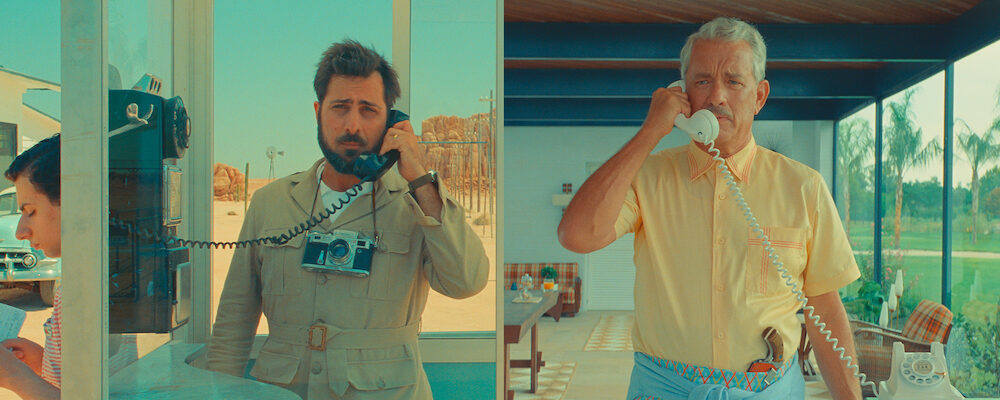Wes Anderson’s ‘Asteroid City’ Is a Technicolor Meditation on Desire, Grief and the Unknown
Sandra Miska
There is a lot going on in “Asteroid City,” the 11th feature from filmmaker Wes Anderson. Jason Schwartzman, Scarlett Johansson and Tom Hanks lead an eclectic ensemble that centers on Augie Steenbeck (Schwartzman), a war photographer and very recent widower who takes his four precocious children, including 14-year-old Woodrow (Jake Ryan), to a junior stargazer convention in a small desert town set in 1955. Woodrow is one of several kids at the convention with quirky parents in tow. No one there knows quite what they are in for, but what is to be a week of learning and fellowship turns into something else when an uninvited extraterrestrial shows up.
Augie and Woodrow bond with movie star Midge Campbell (Johansson) and her genius daughter, Dinah (Grace Edwards), respectively. Considering that Schwartzman’s breakthrough role was playing a gifted teen in “Rushmore:” Anderson’s second feature, it feels rather poignant that he should now play the father. Woodrow and Dinah have the sort of awkward and endearing teen romance that has become a hallmark in Anderson’s films, while Augie and Midge form an unlikely connection. Johansson makes some superb choices, as Midge is not your typical Hollywood bombshell. Although, like a lot of actors, she has her share of demons, which is probably why she is drawn to Augie, who has a great deal of darkness within him.
It is not easy to play a character who starts off as being in an emotional desert, but this seems to be a speciality of Schwartzman’s. His own father-in-law, Stanley Zak (Hanks), has mixed feelings about him. One thing the men have in common is a mutual love for Augie’s children and concern for their well-being, and their connection is touching in an odd way.
Despite the alien presence, “Asteroid City” is not exactly a straightforward science fiction film, as Anderson’s E.T. is part of an even larger story about people struggling to make sense of what they do not understand. The story of the convention is actually a play within a television special about the making of the play, which itself is within the film. A conceit like this allows Anderson to thrive and be even more creative when it comes to his set design, props and costumes, and the result is a scrumptious visual masterpiece filled with Americana.
The whole play setup means that many of the actors find themselves playing dual roles, including Schwartzman, whose actor character struggles to make sense of some of Augie’s actions. Playing into the theme of not understanding the unknown, director Schubert Green (Adrien Brody) tells him that some things just are not meant to be understood. Whether Schubert is a brilliant existential thinker or just a hack is up to the viewer to decide. Edward Norton is more intriguing as Conrad Earp, the tortured playwright behind “Asteroid City.” Bryan Cranston plays it straight as the host of the television show, a man who looks at the creation of art from an archaeological standpoint.
If there is anything missing from “Asteroid City,” it is the brand of humor that made some of Anderson’s earlier films so beloved. That’s not to say that there are not funny moments in “Asteroid City,” but they just do not quite hit the same way. This may have something to do with the fact that this is Anderson’s first film since his debut “Bottle Rocket” to not feature Bill Murray. His early collaborator Owen Wilson is also missing. But, just like in “Rushmore,” “The Royal Tenenbaums,” “The Life Aquatic with Steve Zissou,” and more, Anderson has a lot to say about grief, parent-child relationships, first loves and the like, making this a film that is definitely worth your time.
“Asteroid City” releases June 16 in select theaters, nationwide June 23.

